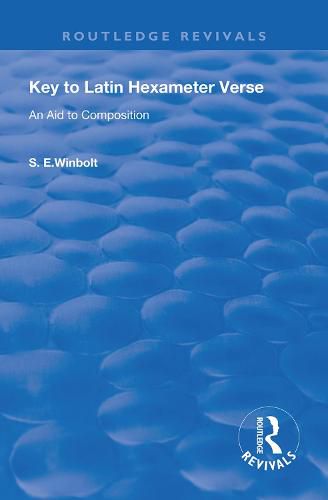Readings Newsletter
Become a Readings Member to make your shopping experience even easier.
Sign in or sign up for free!
You’re not far away from qualifying for FREE standard shipping within Australia
You’ve qualified for FREE standard shipping within Australia
The cart is loading…






Originally published in 1903. Samuel Edward Winbolt (1868-1944) spent his entire working life from 1892 to 1926 teaching classics at his old school, Christ’s Hospital. In his later years, he was best known for his work on Romano-British history and archaeology; but Latin Hexameter Verse, published in 1903, is the book by which he deserves to be remembered and which has earned him his place in the history of classical scholarship. Its subtitle and its stated aim of offering ‘help to fifth and sixth forms, and undergraduates at universities’ belie its true and continuing importance. Winbolt’s detailed, sensitive and copiously illustrated analysis of the technique of Latin verse-writing still provides the most accessible and illuminating guide to a just appreciation of the craftsmanship which went to the formation of the Latin hexameter, ‘ the stateliest measure ever moulded by the lips of man’.
$9.00 standard shipping within Australia
FREE standard shipping within Australia for orders over $100.00
Express & International shipping calculated at checkout
Originally published in 1903. Samuel Edward Winbolt (1868-1944) spent his entire working life from 1892 to 1926 teaching classics at his old school, Christ’s Hospital. In his later years, he was best known for his work on Romano-British history and archaeology; but Latin Hexameter Verse, published in 1903, is the book by which he deserves to be remembered and which has earned him his place in the history of classical scholarship. Its subtitle and its stated aim of offering ‘help to fifth and sixth forms, and undergraduates at universities’ belie its true and continuing importance. Winbolt’s detailed, sensitive and copiously illustrated analysis of the technique of Latin verse-writing still provides the most accessible and illuminating guide to a just appreciation of the craftsmanship which went to the formation of the Latin hexameter, ‘ the stateliest measure ever moulded by the lips of man’.